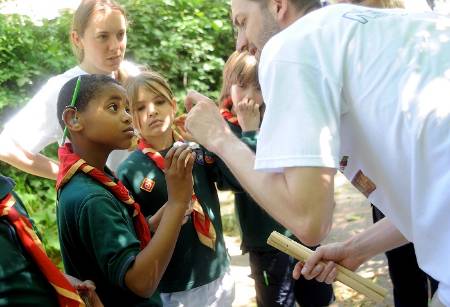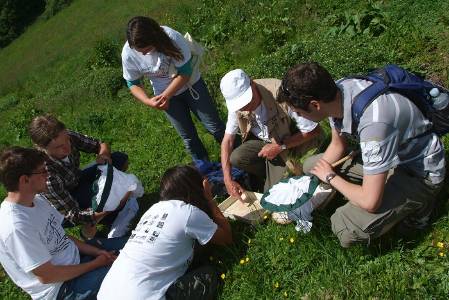Welcome to the Museum's new blog about citizen science! Before we get started, we should probably give you a quick outline of what citizen science actually is... here's a snippet from our official blurb:
'...the involvement of volunteers in scientific projects that contribute to expanding our knowledge of the natural world, through the systematic collection, analysis or interpretation of environmental observations.'
Cubs learning about British natural history from one of the Museum’s experts at a Big Nature Day event in our Wildlife Garden.
And here it is in a little bit more depth... It's at its essence a type of volunteering for the Museum that absolutely anyone can get involved with. Each of our citizen science projects have a specific scientific goal and a flexible approach to participation - you can take part at a time that suits you, at a location of your choice, and either with your friends and family or on your own.
Anyone can take part in our projects and we have and have had a wide variety to suit any interest: our current projects include collecting samples of microorganisms for DNA analysis, reporting stranded whales and dolphins, transcribing hand-written registers that detail the Museum's collections, or recording observations of bluebells, orchids, seaweeds or invertebrates.
You can find out more about how to take part in our projects here and - of course - by following our new blog where we intend to show you what happens behind-the-scenes and what happens next when you have submitted your data to us.
Over the next few posts we'll introduce you to the team and, from that point on, we'll be sharing regular updates and news of exciting developments. We hope you feel inspired to take part and contribute to the Museum's scientific research!
Naturalists sorting and identifying specimens in the field.




